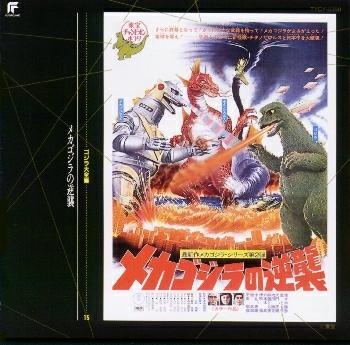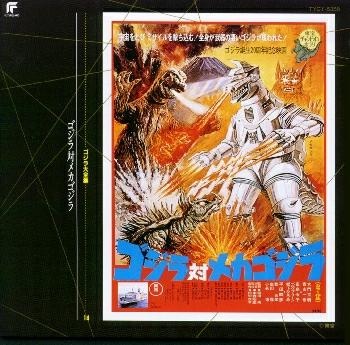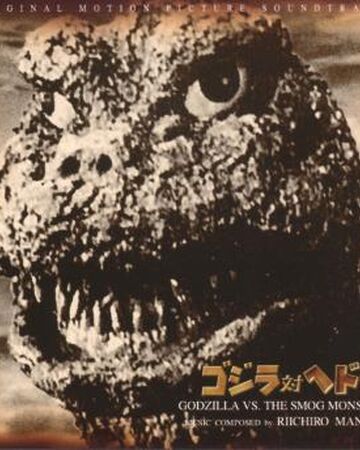
Composed by: Akira Ifukube
Terror of MechaGodzilla was the last installment of the original Showa series. This was not exactly intentional, as more films would doubtlessly have been made if not for the fact that it was the least financially successful movie in the franchise. It was thus perhaps ironically fitting that the last old Godzilla film was directed by Ishiro Honda and scored by Akira Ifukube. The aliens from Godzilla vs. MechaGodzilla rebuild their creation with a few improvements. A mad scientist named Dr. Mifune agrees to use his cybernetic-enhanced daughter Katsura to help control the robot, as well as a dinosaur named Titanosaurus (not the real one, a fictional bipedal one that can cause winds with its tail). The film doesn’t feel as fun as the previous entry, but the story is more intriguing. It’s not the strongest entry, but its leagues ahead of most other late Godzilla entries in the original series.
Ifukube had been gone for a long time. Upon his return Godzilla had already been completely transformed into a goofier kid-friendly superhero. He decided it would be wise to dismiss the traditional theme, as it conveyed a sense of destructive terror. His replacement is the main title march from the original Godzilla film, one of the most important musical decisions in the series. Not only is it more heroic, he plays it a tad more ponderously to match the Big G’s size. Evidently the use of this theme had a major impact, as Ifukube would make it Godzilla’s primary theme when he returned to the franchise sixteen years later.
Ifukube of course does not jazz up MechaGodzilla like Satoh did. Instead he creates a heavily sinister theme. This powerful villainous fanfare creates a great sense of dread with its long notes. Titanosaurus has his own sinister theme. The first part of this theme is played on low instruments while the second gets shrill like Rodan’s theme, appropriate since both can create destructive winds. Katsura, the woman behind these monsters, is an important enough character to gain her own musical identity. This melancholy theme conveys a sense of both romance and tragedy. “Katsura’s Death” (sorry for the spoiler) is one good variation that ends on a soft reprise of MechaGodzilla’s theme. “Ending” does not feature any of the themes, but has a choral flourish which fittingly closes out the Showa series.
Terror of MechaGodzila is a decent finale for old school Godzilla. This and the other MechaGodzilla film both had music that helped restore some of the Big G’s lost luster. It was fitting that the main title march from the first film would return as Godzilla’s heroic theme. This brought the music full circle and also set the stage of Ifukube’s contribution to the Heisei series in the 90s. One quibble for Terror’s score is some of the repetition, which is to be expected in many Ifukube scores.
Rating: 7/10
- Main Title
- ‘Akatsuki One’ in Distress
- Mugar Heads to Earth
- Dr. Mafune’s Past
- The Female in the Mafune Family
- Off to Mount Amagi
- Mechagodzilla II
- Ichinose and Katsura
- Katsura’s Memories
- Escape from Titanosaurus
- Ichinose Gets Tailed
- Titanosaurus Swings into Action
- Titanosaurus Attacks
- The Appearance of Godzilla
- Cyborg Surgery
- The Mafune Family Tragedy
- Mechagodzilla II Goes on the Offensive
- Mechagodzilla Counterattacks
- Godzilla vs. The Mega Monster Tag-Team
- Godzilla in Danger
- Resurrection of Godzilla
- Sharpshooting
- Katsura’s Death
- Ending

